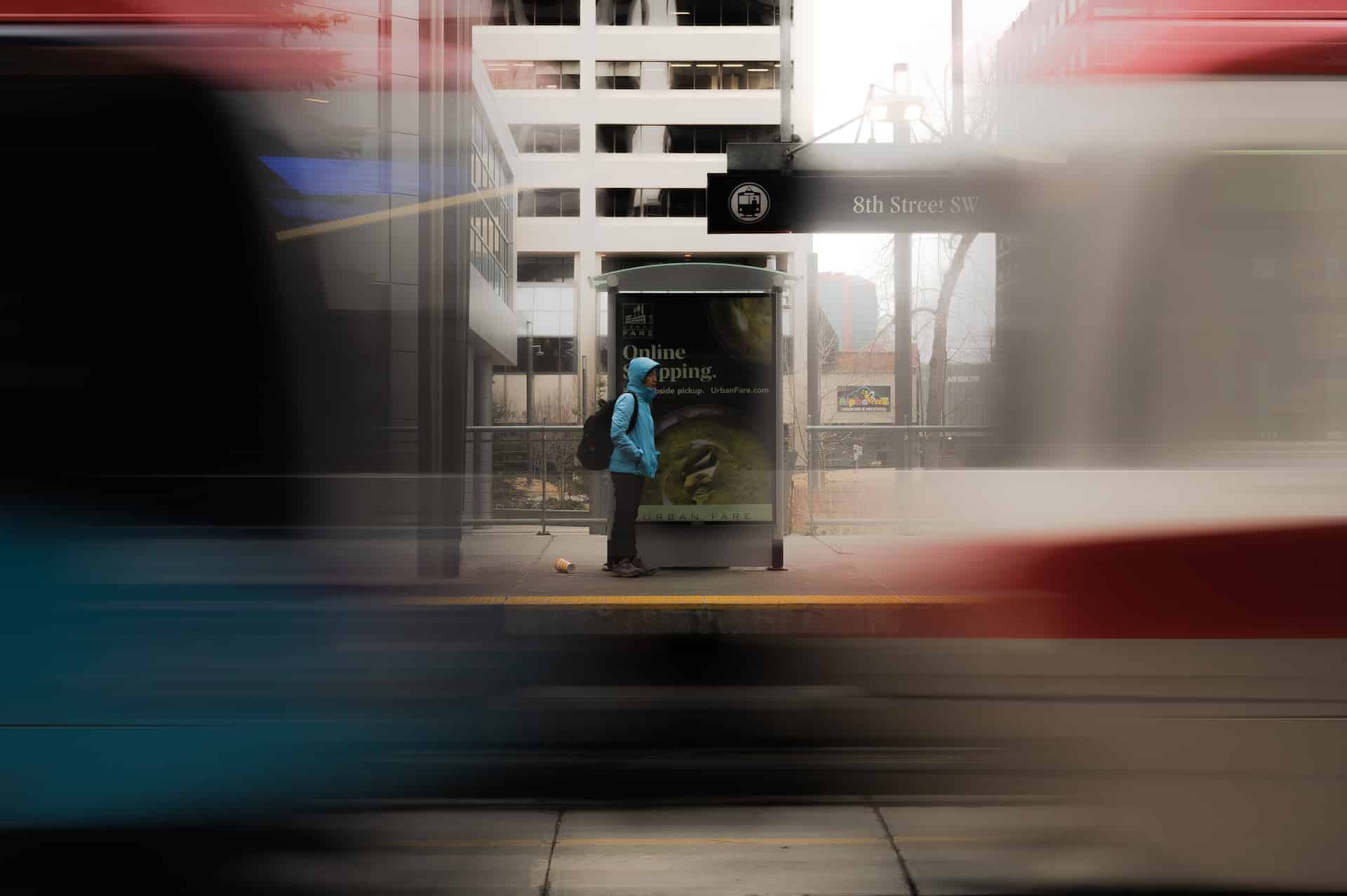As the seasons change and Albertans return to their regular routines, many will turn to public transit as a convenient method of transportation. However, public transit is not exempt from accidents, and knowing what steps to take when you are a passenger can be confusing.
Whether you ride the bus to work daily or take the occasional LRT ride to and from a sporting event or concert, it is important to know what to do if you are injured in an accident. This blog will act as a guide for individuals to gain a better understanding of the steps involved in a personal injury claim resulting from someone else’s negligence.
Public Transit Accidents
Every accident claim is unique – particularly those involving public transit. Concerning public transit accidents, the Alberta Court of Appeal confirmed in Nice v. Calgary (City) that an “accident” includes situations beyond a mere collision between two motor vehicles. Instead, a public transit accident may include a passenger’s fall on a bus or another incident that results in a passenger’s injury, which may attract compensation.
Throughout the province, it is not uncommon for accidents to involve a bus, train or LRT; however, depending on your position in the accident, for example, as a pedestrian, vehicle operator, cyclist or public transit passenger, the steps involved in a personal injury claim may vary. Therefore, seeking guidance from an experienced personal injury lawyer who can assess your circumstances and advise you on your options moving forward is important.
Steps to Take After a Public Transit Accident as a Passenger
Every public transit passenger needs to exercise caution. In contrast, onboard a transit vehicle accidents can happen quickly and can result in serious injuries, particularly given the lack of seatbelts and the number of passengers required to stand throughout the ride. While it is impossible to prevent every accident and injury, there are certain steps passengers can take to prioritize their safety. In the event of an accident, there are several steps that an injured passenger should take, which are set out below.
Seek Medical Attention
First and foremost, it is important to seek immediate medical attention as injuries may only sometimes be apparent. Even “minor” injuries can end up being more severe than they appear, and it is important to describe your injuries in as much detail as possible. If you pursue a personal injury claim for compensation, seeking medical treatment quickly can help establish what injuries you sustained as a result of the accident. It is also critical to adhere to a medical treatment plan and attend follow-up appointments to ensure that your injuries are properly diagnosed and managed.
Take Note of Bus Details
In cases of a collision with another vehicle, it is often unlikely that you saw which vehicle was at fault for the accident. Therefore, it is important to take note of the accident surroundings, such as:
- the time and location of the accident;
- the bus vehicle registration number and route number;
- the bus license plate number;
- the operator’s information, and
- information of the other drivers involved, if applicable.
Every piece of information collected can help identify the parties involved and will assist in commencing your personal injury claim. This information will also help report the accident to the appropriate authorities.
Collect Additional Evidence
Beyond the above-listed details, obtaining additional evidence can be helpful in anticipation of pursuing a future claim for compensation. Further supporting evidence may be obtained from witnesses who saw the accident or other passengers who can help corroborate the events. You or your personal injury lawyer may also obtain video evidence to confirm accident details and support your claim.
Document Damages and Losses
After an accident, it is incredibly helpful to keep an ongoing record of your injuries and symptoms, out-of-pocket expenses, lost income, and other damages or losses incurred due to the accident. Since personal injury claims may only settle for a few months or years, maintaining an up-to-date and detailed record of receipts and damages can ensure better accuracy in your claim for compensation rather than relying on memory alone.
Seek Legal Representation From a Trusted Personal Injury Lawyer
When the City learns of your accident, it is not uncommon for a representative to contact you to obtain a statement. However, it is important to consult with a personal injury lawyer before speaking with a third party to ensure that you do not provide information that may be used to discredit your compensation claim.
Instead, it is important to contact a personal injury lawyer as soon as possible to ensure that you obtain legal advice that protects your interests. A personal injury lawyer will also be able to help you navigate the claims process, which can be particularly important when determining fault, as this will impact who you commence a lawsuit against. If another driver is found at fault, compensation will be sought from that driver’s insurance company. Alternatively, suppose the public transit operator is found to be even partially at fault. In that case, you may claim against the transit owner and operator, which, in many cases, is the municipal government.
The Personal Injury Lawyers at Cuming & Gillespie LLP in Calgary Advise Clients on Public Transit Accident Claims
At Cuming & Gillespie LLP, our skilled personal injury lawyers regularly advise clients on their options following an accident involving public transit. Whether you were involved in an accident as a vehicle operator or were an injured public transit passenger, it can be unclear what steps to take. Our personal injury lawyers ensure that clients are aware of their options and can make informed decisions as they proceed through the claims process. We manage the difficult paperwork so that you can focus on your injury treatment and recovery. If you or a loved one has been injured in a public transit accident, contact our office online or call us at 403-571-0555 to learn how we can assist you.

